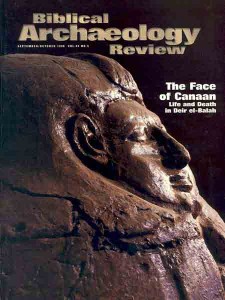Biblical Archaeology Review, September/October 1998
Features
Cultural Crossroads
Deir el-Balah and the cosmopolitan culture of the Late Bronze Age
After the Six-Day War in 1967, the Old City of Jerusalem became accessible to Israelis for the first time in nearly 20 years. For many who, like me, had grown up in Jerusalem during the British Mandate, when one could travel freely between the Old City and...Read more ›
Sacred Spaces
Of standing stones, high places and cult objects at Tel Dan
Upon King Solomon’s death, his kingdom split in two—the kingdom of Judah in the south and that of Israel in the north. A scion of David continued to sit on the Judahite throne in Jerusalem for more than 300 years—until the...Read more ›
Ancient Israel’s Stone Age
Purity in Second Temple times
In the decades before the Roman destruction of Jerusalem and its Temple in 70 C.E., Jews gave a new and heightened emphasis to ritual purity. In fact, purity laws may have been interpreted more strictly at this time than at any point before—or since. A very early...Read more ›
Discovering a Goddess
A new look at the Ekron inscription identifies a mysterious deity
In 1996, in the final season of the 13-year excavation of Tel Miqne, excavators discovered a monumental inscription that is surely one of the most sensational finds of the 1990s. It is a royal dedicatory inscription that mentions Ekron, thus pinning down the ancient name of Tel...Read more ›

